GoMIM + Manus 1.5: Your AI Learning Duo
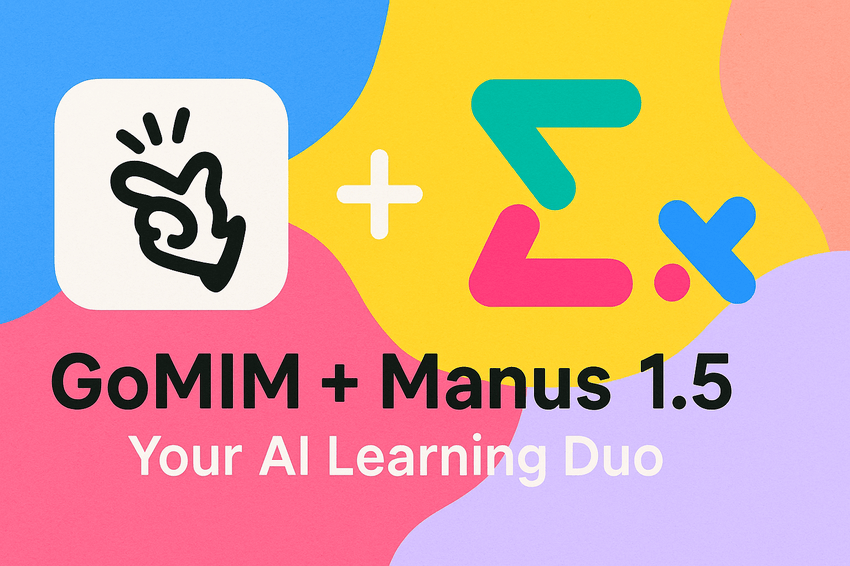
We live in a world filled with information—but knowing what to do with it remains the larger challenge. We can ask ChatGPT or Bard to explain a concept, but the real barrier is execution: gathering, organizing, building, integrating. That's where Manus 1.5 comes in—not just as a thinking assistant, but as an action engine.
Below I'll walk you through what's new and verifiable in Manus 1.5, and then show how pairing it with GoMim can transform your learning workflow.
What Is Manus 1.5? (And What's Actually New)
Manus is a "general agent" AI system developed by the Monica / Butterfly Effect team. The first public version of Manus launched in March 2025. On October 16, 2025, the team released Manus 1.5, which they describe as their most capable agent to date. This update introduces multiple enhancements in speed, reliability, quality, and a new "full-stack app builder" capability.
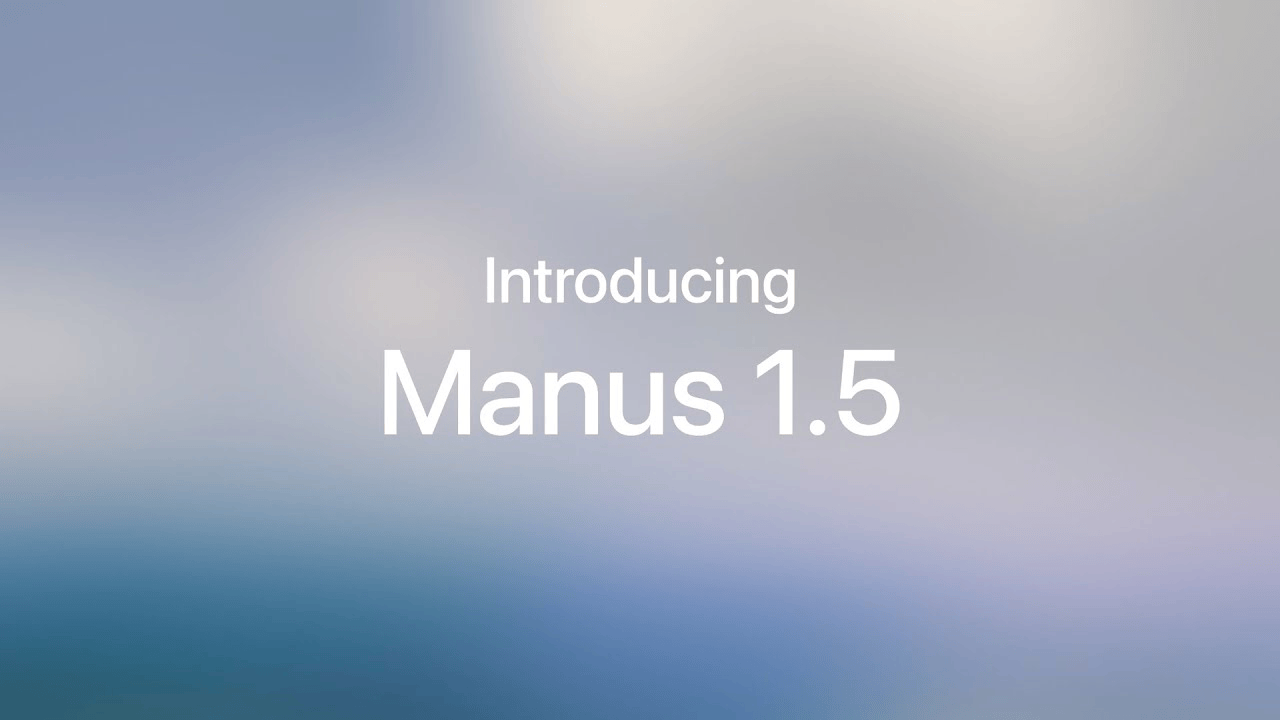
Performance Improvements: Faster and Smarter (Official Claims)
According to the official announcement, the underlying engine was rearchitected, resulting in average task runtimes shrinking from ~15 minutes down to just under 4 minutes. The team states that more complex tasks now receive extra reasoning time and compute to yield better outputs.
They report an internal benchmark that shows about a 15% improvement in task output quality compared to earlier versions, as well as a 6% increase in user satisfaction. These are internal metrics, and third-party reviewers note that they have not been independently validated.
Expanded Context, Reliability, and Robustness
Another headline upgrade is Manus's ability to maintain longer, more coherent context across steps and deliverables. In the release notes, this is referred to as an "expanded context window," which helps the agent retain more relevant information across multi-step workflows. Some media reports even characterize it as "unlimited context processing," though the company does not disclose a literal token limit.
The result, according to reviewers, is that tasks which previously failed due to complexity now have a better chance of success under 1.5.
Full-Stack Web App Builder: One Prompt to Rule Them All
Perhaps the most attention-grabbing feature is the new web app builder embedded in Manus 1.5. As per the official post, you can instruct Manus to generate a production-ready web application—frontend, backend, database, authentication, and embedded AI features—entirely via conversation.
In practice, reviews confirm that the agent can scaffold full-stack workflows: UI, APIs, data persistence, auth flows, and even AI components (e.g. LLM or image generation) integrated into the app. Some coverage mentions supporting custom domains, analytics, and event-driven logic.
Collaboration, Library, and Lite Variant
Manus 1.5 introduces collaboration features, allowing multiple users to work in a shared session with the agent. It also adds a library to organize all generated artifacts.
Additionally, there is now a Manus-1.5-Lite variant, which is optimized for cost-efficiency and smaller tasks. This is intended for more routine workflows, while the full 1.5 version handles heavier tasks.
Caveats & What You Should Know
Manus 1.5 is a big step forward, but it's not perfect yet. Some of the improvements, like the reported speed and quality gains, come from the company's own internal testing. Independent reviewers have praised its progress but still suggest using it thoughtfully.
You should also remember that while Manus can build apps or manage complex tasks, it still benefits from a human check. Think of it as a powerful assistant that helps you get 80–90% of the work done—then you review and refine the final part yourself.
In short, Manus 1.5 works best when you guide it clearly, give it structured goals, and review what it produces. It's designed to save you time and make learning or creating easier, but your own thinking still makes the biggest difference.
In summary: Manus 1.5 represents a meaningful leap toward more powerful, autonomous agentic behavior, especially in speed, context retention, and integrated app building—but you should approach the most ambitious use cases with caution and testing.
Why Manus 1.5 Changes the Game
Given those capabilities, Manus now enters the realm of AI that doesn't just talk, but executes. It can reduce the overhead of switching among research, web dev, note-taking, and content creation.
In a learning context, it means you can treat Manus not as a "smart assistant" but as your digital project manager and technician. Tell it what you want to build—a study module, a quiz generator, or a small web demo—and it handles the scaffolding so you can focus on higher-level thinking.
That said, execution alone doesn't guarantee deep understanding. This is where pairing Manus with a focused learning tool like GoMim becomes especially effective. GoMim, designed as an AI math solver and structured learning companion, provides the conceptual clarity and step-by-step guidance that help you learn smarter, while Manus helps you apply that learning through automation and creation. Together, they show how AI tools can complement each other within a specific domain like mathematics, making both learning and doing more seamless.
GoMim + Manus 1.5: Synchronized Learning Workflows
Where Manus 1.5 is the engine, GoMim plays the role of tutor and knowledge navigator. GoMim specializes in step-by-step math solving and guided learning—you can upload a photo of a problem or type it out, and it walks you through each step, explains the reasoning, and even offers follow-up questions to reinforce understanding.
Here's how the two tools can work together in a real learning scenario:
- Define your learning roadmap with GoMim
Ask: "What are the key concepts I need to master before tackling Calculus integrals?" GoMim will break it down into a structured path—covering limits, derivatives, and function behavior—with short quizzes to check your progress.
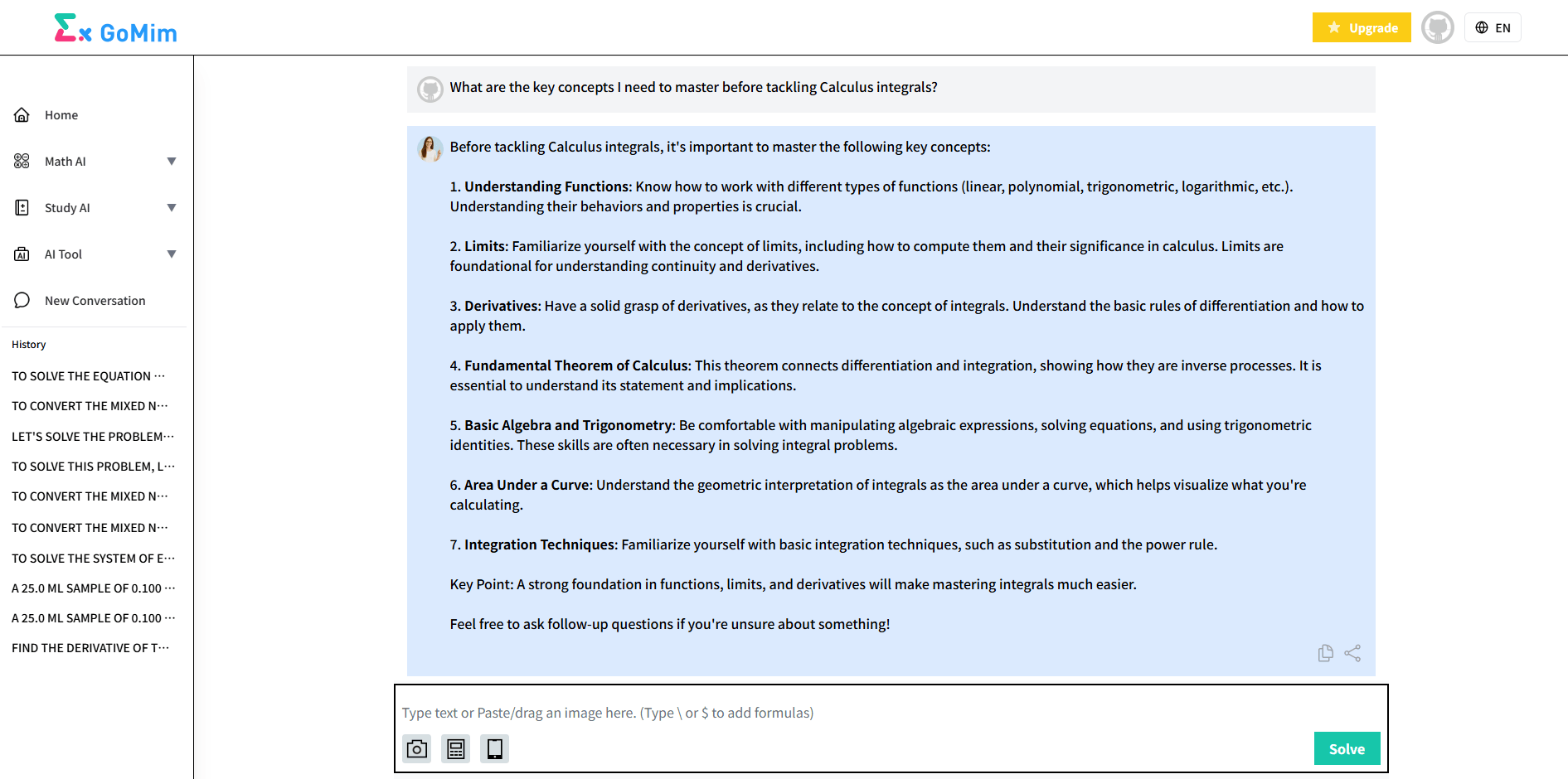
- Execute resource tasks with Manus 1.5
Prompt Manus: "Collect the best visual tutorials and example problems for derivative applications, summarize them into my Notion study folder." Manus automatically fetches, organizes, and formats the materials, saving hours of manual research.
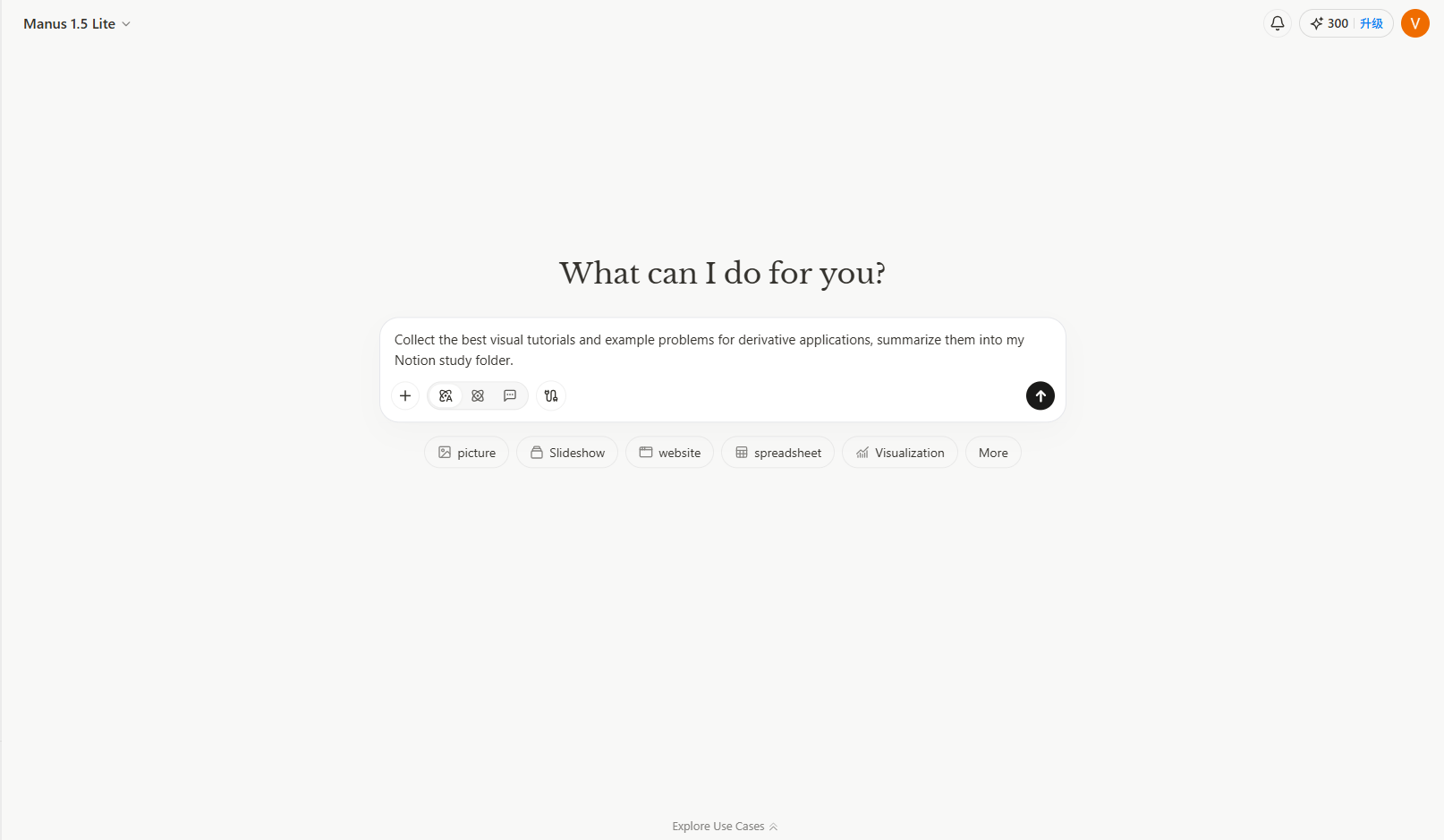
- Return to GoMim for active practice
Use GoMim to solve sample problems generated from Manus's summaries. Ask: "Show me step-by-step how to solve this derivative problem" or "Explain where students usually make mistakes in this concept."
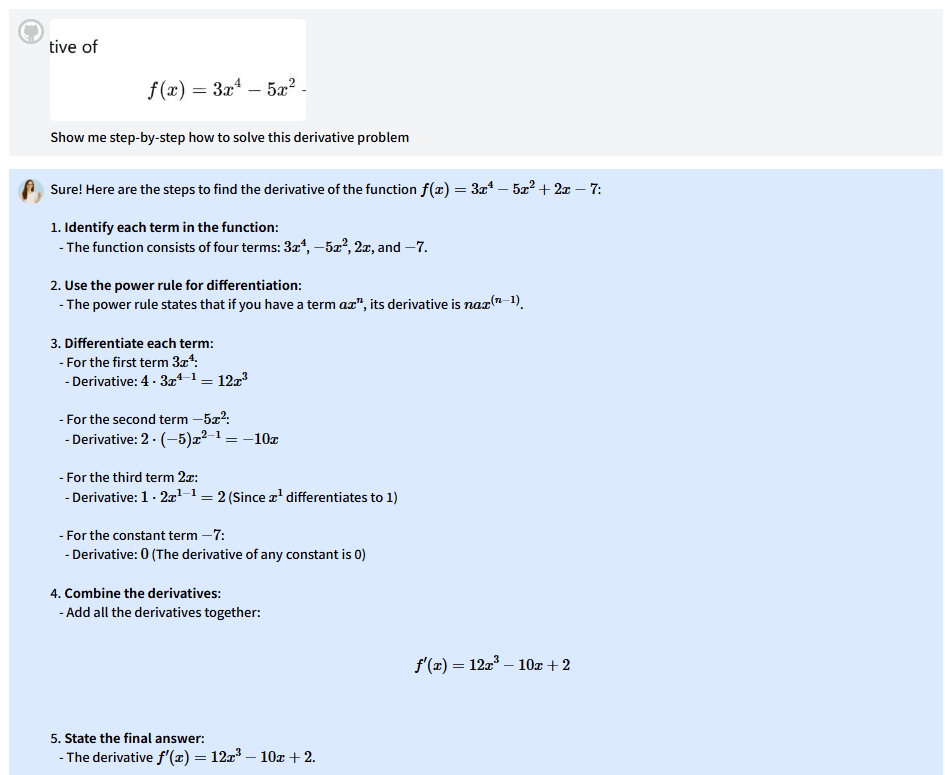
- Automate your review loop
Have Manus convert GoMim's step-by-step explanations into flashcards or spaced-repetition files. Then, use GoMim interactively to quiz yourself, reinforcing mastery through guided reasoning.
In this workflow, GoMim ensures you understand deeply, while Manus ensures that content organization and execution never slow you down. The result is a synchronized learning system: you focus on insight and creativity, Manus handles the automation, and GoMim keeps your understanding sharp and structured.
Final Thoughts
Manus 1.5 marks a strong step toward AI that can truly execute. Its real strength emerges when paired with GoMim—a focused, concept-driven math companion. Together, they turn learning into a smoother, smarter process: Manus automates the workflow, while GoMim deepens understanding. The goal isn't to replace your thinking but to elevate it—letting AI handle the busywork so you can focus on insight, creativity, and real comprehension.
FAQs
What is Manus 1.5 and how is it different from previous versions?
Manus 1.5 is the latest version of the "general agent" AI developed by the Monica / Butterfly Effect team. Compared to earlier versions, it is significantly faster, more reliable, and introduces a full-stack web app builder that allows users to create entire applications via conversation. It also supports collaboration and has a Lite version for smaller tasks.
How does Manus 1.5 improve learning and productivity?
Manus 1.5 acts as an execution-focused AI—it can organize, build, and automate complex tasks such as generating web apps, collecting study resources, or managing workflows. This reduces time spent on logistics, allowing learners and creators to focus on higher-level thinking and understanding.
What is GoMim and how does it complement Manus 1.5?
GoMim is an AI math solver and structured learning companion. It explains mathematical concepts through clear, step-by-step reasoning and supports photo or text input. When paired with Manus 1.5, GoMim handles the learning and reasoning side, while Manus automates and organizes tasks—creating a powerful, synchronized study workflow.
Can Manus 1.5 and GoMim be used together for math learning?
Yes. Students can use GoMim to understand core math concepts, like derivatives or integrals, and then ask Manus 1.5 to gather related resources, generate practice quizzes, or create study materials. This pairing allows for both conceptual mastery and efficient study organization.
Is Manus 1.5 fully autonomous, or does it still need human guidance?
Manus 1.5 is powerful, but it still benefits from human supervision. It can complete about 80–90% of a task automatically, but users should review and refine outputs for accuracy and quality. The best results come from guiding it with clear goals and structured instructions.
Recent Posts

On October 20, 2025, a significant disruption to Amazon Web Services (AWS) sent ripples across the digital world, impact...Try it free now
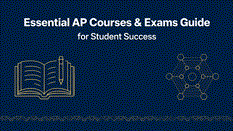
Advanced Placement (AP) is a program created by the College Board in the United States that offers college-level curricu...Try it free now
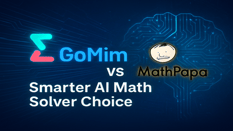
Hello, math enthusiasts! In today's dynamic educational environment, AI math solvers are becoming increasingly valuable ...Try it free now
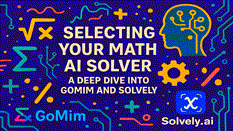
In today's educational landscape, selecting the right mathematical tool is crucial for students and learners aiming to e...Try it free now
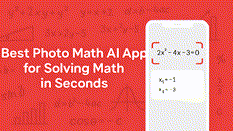
If you've ever struggled with solving a tricky math problem, you're not alone. Today, students across the world are turn...Try it free now

Have you ever stared at a tricky algebra problem and wished for instant help? Or maybe you tried solving a calculus equa...Try it free now
Table of Contents
Your Personal AI Math Tutor
instant problem-solving, step-by-step explanations, personalized learning paths, and visual aids
AI Math SolverLearn math smarter on GoMim
Try GoMim Free - The Most Advanced AI Math Solver!
Join thousands of students using GoMim for math learning and problem -solving.
